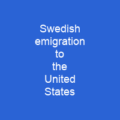Sweden: A Country of Rich History and Modern Progress
Imagine a land where history intertwines with modernity, where the past whispers through ancient runes while the present hums with innovation. Welcome to Sweden, a Nordic gem nestled in Northern Europe.
The Land and Its People
Sweden is a vast country, covering an area of 449,964 km2, making it the fifth-largest in Europe. It borders Norway to the west and north, Finland to the east, and is home to just over 10 million people, giving it one of the lowest population densities at 25.5 inhabitants per square kilometre.
Its capital, Stockholm, is a bustling metropolis with a rich history dating back centuries. The country’s diverse climate, influenced by its length and latitude, offers a tapestry of landscapes from lush forests to rugged coasts. This natural beauty has attracted sea-faring peoples known as the Norsemen, who left their mark on the land long before the establishment of a unified Swedish state in the late 10th century.
A Rich Historical Tapestry
Sweden’s history is a fascinating journey through time. From its Viking Age explorations to the formation of the Swedish Empire during the Thirty Years’ War, Sweden has played a significant role in European politics and culture. The country’s transition from a feudal society to a constitutional monarchy marked by parliamentary democracy and social welfare systems reflects its commitment to progress and equality.
Key figures like Gustav Vasa, who broke free from the Hanseatic League and initiated the Protestant Reformation, have shaped Sweden into the nation it is today. The country’s role in the Napoleonic Wars and its subsequent alliances with France and later against it highlight its strategic importance on the European stage.
Modern Challenges and Successes
In recent decades, Sweden has faced significant challenges, including mass emigration due to economic hardship and political instability. Despite these issues, the country has maintained a high standard of living, with a strong focus on education, healthcare, and social welfare. The introduction of a six-hour workday pilot program in 2014 aimed at reducing costs through increased efficiency and decreased sick leave hours.
Sweden’s economy is characterized by its knowledge-intensive manufacturing sector, business services, and public service sector. Large organizations dominate the economy, with high-tech manufacturing accounting for nearly 10% of GDP. The country has a strong tradition of engineering inventions, pharmaceuticals, electronics, and high-tech industries, including companies like Ericsson and AstraZeneca.
Sweden’s Cultural Landscape
Culture in Sweden is vibrant and diverse. From its rich literary history to its innovative architecture, the country offers a unique blend of tradition and modernity. Swedish literature has produced world-renowned authors such as Astrid Lindgren, Selma Lagerlöf, and Harry Martinson. The country’s architectural style evolved from timber buildings to grand mansions and castles in the 1520s, with notable examples like Karlskrona and Drottningholm Palace.
Swedish cuisine is simple yet flavorful, focusing on fish, meat, potatoes, dairy products, and spices. The country’s film industry has produced influential filmmakers such as Ingmar Bergman, Greta Garbo, Ingrid Bergman, Lukas Moodysson, and Lasse Hallström. Sports are a national passion, with football, ice hockey, horse sports, golf, and orienteering being the most popular activities.
Sweden’s Role in Global Affairs
Sweden has played a significant role in global affairs, from its neutrality during both World Wars to its recent decision to join NATO following Russia’s invasion of Ukraine. The country is committed to maintaining peace and security through active participation in international organizations like the European Union and the United Nations.
The Future of Sweden
As Sweden continues to evolve, it faces new challenges such as managing immigration and addressing climate change. However, its strong commitment to innovation, equality, and social welfare ensures that it remains a beacon of progress in the modern world.

Sweden’s journey from a Viking Age kingdom to a modern, innovative nation is nothing short of remarkable. As it continues to navigate the complexities of the 21st century, one thing remains clear: Sweden will always be at the forefront of progress and innovation.
Conclusion: Sweden’s rich history and ongoing commitment to progress make it a fascinating country to explore. From its Viking Age explorations to its modern innovations in technology and social welfare, Sweden continues to captivate with its blend of tradition and forward-thinking.
You want to know more about Sweden?
This page is based on the article Sweden published in Wikipedia (retrieved on March 7, 2025) and was automatically summarized using artificial intelligence.






